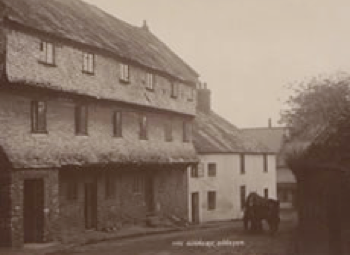Historic Dunster
The village of Dunster was first settled on the present site around 700AD and was first referenced in the Doomsday Book. At this time the village was called Torre. The centuries have carved out a unique little village which is considered the jewel in the crown of Exmoor National Park.
The Yarn Market in the High Street shows the village's wool trading heritage that held sway of the towns economy for hundreds of years. Naturally the story and history of Dunster is integrally linked with the history of the castle itself which is now owned and maintained by the National Trust.

Dunster is incredibly protected to ensure that it maintains its heritage. With over 200 grade 2 listed, 2 grade 1 and 2 grade 1* buildings, Dunster is well preserved
Dunster boasts a number of unique attractions and features. From the ancient High Street to the old Butter Cross, the castle which towers over the village, the dolls museum and much more besides. Including its own working watermill.
The High Street is almost unchanged from images taken close to two centuries ago.
Following a dispute between the monks and the town, in 1499 the church was divided into a conventual chapel to the East and a parochial church to the West; an arrangement that persists to this day.
One legacy of that split is the magnificent Rood Screen that spans the church.




Yarn Market, Dunster
The Nunnery, Dunster
Dunster High Street
St George’s Church Dunster

Dunster High Street

